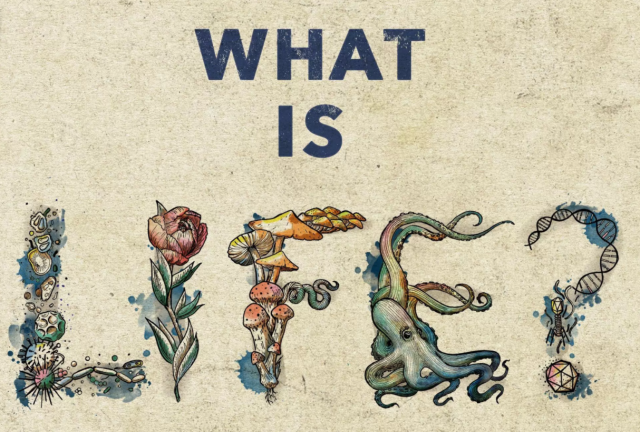New Year, New Podcast
For the first Friday’s Elk of 2019, I have some good news. In some earlier newsletters I wrote about a live series of conversations I hosted in New York about the nature of life itself. Now you can listen to the podcast edition of “What Is Life?”–eight episodes of talk with fascinating thinkers about what it means to be alive. Here’s a link to iTunes. Also I’ve put together a page on my web site with show notes and embedded recordings, plus a set of pages on Medium. It should also be propagating itself to Sticher and other podcast services. Thanks to Ben Lillie and all the good people at Caveat for making this happen!
Decoding Watson
PBS recently ran a thorough and provocative documentary about Jim Watson, who shared the Nobel Prize for discovering the structure of DNA. You can watch it here. I show up from time to time to offer some talking-head narration. For more on the show, you can read this New York Times article by Amy Harmon–and her follow-up piece on the fall-out that ensured after the show aired.
CRISPR on The Daily
Jennifer Senior interviewed me about the ongoing CRISPR baby saga for the Daily podcast from the New York Times. Listen here.
Crickets and Spies
Here’s what I’ve been writing for the New York Times since the last Friday’s Elk:
1. Numerous remains of Aboriginal Australians are scattered in museum collections around the world. DNA may help bring them back home to rest.
2. In Cuba, American diplomats have suffered mysterious neurological symptoms. One common report was that they heard strange sounds before falling ill. Was it a sonic weapon–or Cuban crickets?
3. There’s evidence suggesting that our microbiome is talking to our brains. And that conversation may have an influence on the development of conditions ranging from Alzheimer’s to autism. For this feature, I tried to balance the excitement of the science with the profound mysteries that remain. Don’t expect a quick probiotic cure for Parkinson’s any time soon.
4. A quarter million years of Denisovan history. The Denisovans are an extinct branch of the human family, known only from a single Siberian cave. Now their fossils have a clear-cut timeline. They lived in the cave for at least 250,000 years and may have gained the powers of self-expression along the way.
New to the Calendar
A couple updates to my upcoming appearances:
If you’re heading to the annual AAAS meeting in Washington DC, please consider coming to my lecture on Saturday at noon. I’ll be signing books afterwards.
I’m looking forward to a live conversation with David Quammen at Harvard on February 28.
Upcoming Talks
February 16, 2019 Washington DC AAAS Topical Lecture: “Heredity: Our Defining Mystery”…followed by a book signing.
February 20, 2019 Connecticut College, New London CT: “The Deep History of Global Affairs”
February 28, 2019 Harvard Museum of Natural History: A Conversation with David Quammen.
March 3, 2019 Adelaide Writer’s Week
March 7, 2019 University of Illinois, Urbana-Champaign. Thomas M. Siebel Lecture Series in Science and Society. Details to come.
March 15, 2019 Brookline, MA. “Science On Screen” at the Coolidge Theater. (A double-feature: a talk about heredity and a screening of the heredity-based comedy, Flirting With Disaster.)
April 9, 2019 Wellesley College. Mayer Lecture. Details to come.
May 25-26, 2019 Copenhagen: Bloom Festival. Details to come.
If you’ve enjoyed reading She Has Her Mother’s Laugh, please rate/review it on your favorite book site, such as Goodreads or Amazon. Thanks!
You can find information and ordering links for my other books here. You can also follow me on Twitter, Facebook, Goodreads, and LinkedIn. If someone forwarded this email to you, you can subscribe to it here.
Best wishes, Carl
Originally published January 31, 2019. Copyright 2019 Carl Zimmer.
